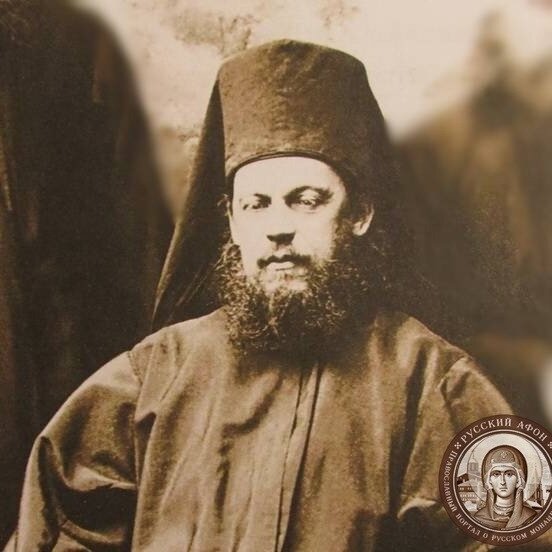Prince Konstantin Alexandrovich Viazemsky, Князь Константи́н Алекса́ндрович Вя́земский (1852, Ратмино-Ratmino, Russian Empire ‑1903, Святая гора Афон-Sacred Mount Athos, Macedonia) was a Russian traveler, botanist and aristocratic ‘enfant terrible’ who visited China, Southeast Asia and Cambodia in 1891 – 1892.
Born in an aristocratic family — The Viazemskys were princes of successively Novgorod, Kiev, Tula and Vladimir from the 10th century –, Konstantin was the son of famous general Alexandr Sergyevich Viazemsky (Александр Сергеевич Вяземский, 4 May 1806 – 9 oct 1867) and Yekaterina Lvova Viazemsky born Baroness Bodé (Olsufyeva from her first marriage) (Екатерина Львовна Вяземский Боде, 16 June 1819 – 30 Dec.1867), who had German, Alsatian and English roots (1). His maternal grandfather, Baron Lev Karlovich Bode (барон Лев Карлович Боде) was обер-гофмейстер (chief-chamberlain of the Palace Office) at the Russian Imperial Court, while his younger sister Sofia (Софья Александровна княгиня Голицына, 1859 – 1916), was to marry the illustrious Prince Alexsandr Golitsyn (Александр Борисович Голицын,1855 – 2920).
Late in his life, when he had joined the ascetic Russian Ortodox monastery at Mount Athos in 1897 and be ordained Skhimonakh (Ascetic Monk) under the name Xenophont (Схимонахъ Ксенофонтъ) in 1900, in admiration for the Greek military historian and traveler Xenophon of Athens, he noted in his diary that “if my father taught me that there is honor and what befits a Russian prince, then my mother taught me what is love for one’s neighbor and what befits a Christian.”
An orphan at 15, Konstantin Viazemsky sold the family estate in 1880 and started to travel extensively, visiting Siberia, Mandchouria, Morocco, Algiers, Tunisia (he was a honorary member of the French Geographical Society (2)), Syria, Palestine, Egypt, Sudan, and then, through a journey of some 8,500 miles, mostly on horseback, reached Southeast Asia in 1891. Called an ‘adventurer’ and an ‘eccentric wanderer’ by dignified critics, ‘Его превосходительство бродяга’(‘His Excellency the Tramp’) — to quote V. Zhuravlev’s profile in 1996 — was often robbed, and even wounded, on the road.
While he visited and wrote about Angkor and Phimai temples, his attention was more focused on the Cambodian people’s daily life, the impact of the French Protectorate rule on poor villagers, and the colorful expats he was encountering during his wandering treks (for instance, portraying Russian mercenaries enrolled in the French Légion étrangere). His notations were first published under the title Путешествие вокруг Азии верхом (Travels Around Asia on Horseback) in the Russian journal Русское Обозрѣнiе (Russian Review). A fervent botanist, he claimed that “science, which is my whole life, is what brought me to God.”
After traveling across India and Tibet, Viazemsky joined the recluse community of Mount Athos on April 12,1897, first as a simple monk, Brother Kyprian, serving as a librarian. According to the official site of the ‘Sacred Mount’, he had opted for the ascetic life at age 45 during his wife’s (3) funeral three months earlier, under the realization that “онъ хоть и былъ женатъ законнымъ бракомъ, но страсть блуда захватила его и стала причиной нескончаемыхъ бѣдъ, уничтожившихъ его жизнь.” (“although he was married by lawful marriage, the passion of fornication captured him and became the cause of endless misfortunes that destroyed his life.”)
(1) A.S. Viazemsky had been previously married (circa 1832) to Anastasia N. Rimskaya-Korsakova (Анастасия Николаевна Римская-Корсакова,1810 – 1848, daughter of Nikolai P. Rimsky-Korsakov and Princess Maria P. Dolgoruva).
(2) According to several Tomsk historians, ‘cвои географические и картографические труды он отправил в Русское Географическое Императорское Общество, которое ответило отказом в их рассмотрении, причиной которого была неординарная личность самого путешественника. Однако французские коллеги по достоинству оценили работу российского аристократа, приняв его почётным членом Французской Географической Национальной Академии”.( ‘he sent his geographical and cartographic works to the Russian Geographical Imperial Society, which refused to consider them, the reason for which was the extraordinary personality of the traveler himself. However, the French colleagues appreciated the work of the Russian aristocrat, accepting him as an honorary member of the French Geographical National Academy’.)
(3) Little is known of Viazemsky’s spouse, except that she was with him when he landed in Tangier (Morocco) on Dec. 9, 1881. Morocco was then a prized destination among Russian artists and intellectuals, including L. Tolstoy and A. Chekhov. Some ancestry research tools state that she was (Countess?) Yelena Karlova Komarovskaya (графиня? Елена Карловна Комаровская, born 1862, but death 1903 not 1897).
See also: Благодер Ю. Г., Записки князя К. А. Вяземского о путешествии по Китаю в 1894 — 1895 годах как исторический источник (по страницам журнала «Русское обозрение»)

